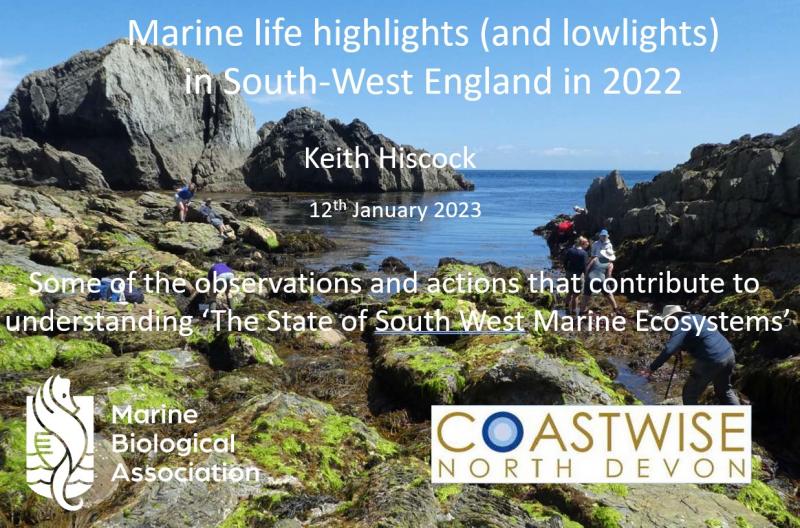
……was the question that old Coastwise friend Dr Keith Hiscock MBE, still at the heart of marine biology at the Marine Biological Association, posed to members.
He was reflecting on a year of unusual weather in 2022 and how it might have affected the marine life round our Devon coasts, using data from the South West Marine Ecosystems surveys.
Another of the sources of information was the Porcupine MNHS Bioblitz held on Lundy in the summer, where 461 species were recorded, and long-term monitoring systems were revisited.
Overall conclusions are mixed with a decline in anenomes, while Sargassum and Harpoon Weed are increasing, although the former does not seem to affect native species.
Sunset Cup Corals have decreased here, as have Sea Fans, although these seem to recover far better on the south coast. Two more non-native species were identified on Lundy – Siphoned Japan Weed and Harvey's Siphon Weed.
Notable events in 2022 included the bird flu epidemic, which badly affected local species, especially gannets.
These was a higher incidence of cetacean sightings, and some species new to the area, including nudibranchs Discodoris rosi and Babakini andoni, and a nemertean worm Tenuilineus albocinctus.
keith outlined species that have either appeared, increased or disappeared, although all these results clearly depend on the intensity of the monitoring effort.
Keith outlined notable sightings, and species to watch out for, including the sabellid polychaete Bispira polyomma, which was sighted at Plymouth, and concluded with some suggestions for monitoring in 2023, and a request for data input to SWME Ecosystems.
Overall, the sort of masterly view of the evolving marine scene that we have learned to expect from Keith.
[Pictures courtesy of Keith Hiscock – 3rd and 4th from top R are of long-term monitoring of Wireweed and anenomes]

